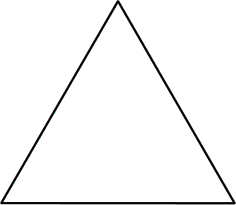08 NOV 2019 by ideonexus
 Why numbering should start at zero
Why numbering should start at zero
When dealing with a sequence of length N, the elements of which we wish to distinguish by subscript, the next vexing question is what subscript value to assign to its starting element. Adhering to convention a) yields, when starting with subscript 1, the subscript range 1 ≤ i < N 1; starting with 0, however, gives the nicer range 0 ≤ i < N. So let us let our ordinals start at zero: an element's ordinal (subscript) equals the number of elements preceding it in the sequence. And the ...Folksonomies: computer science
Folksonomies: computer science
27 JUL 2018 by ideonexus
 Constituative Rules of Chutes and Ladders
Constituative Rules of Chutes and Ladders
Players all begin with a value of zero.
Players alternate turns adding a random number of 1–6 to their current value.
The first player to reach a value of exactly 100 wins (if adding the random number to a player's total would make the total exceed 100, do not add the random number this turn).
When a player's total exactly reaches certain numbers, the total changes. For example, if a player reaches exactly 9, her total becomes 31. If a player reaches exactly 49, her total becomes 11.(This r...27 JUL 2018 by ideonexus
 The Universality of Play
The Universality of Play
Gutsmuths.—Many of the ideas in PHome are better expressed, though independently arrived at, in the remarkable volume on play, published by Gutsmuths, ‘the father of play in Germany,’ towards the end of the eighteenth century. Gutsmuths recognised the universality of play among all ages and all peoples, the infinite number of games and the skill exhibited by the race in their invention and manipulation, the health-giving quality of play and its ultimate origin (though fatigue and ennui ...29 SEP 2017 by ideonexus
 Roman Arithmetic
Roman Arithmetic
...basic Roman arithmetic is largely rather simple, even for those of us spoiled by Arabic notation. Addition is no sweat, because complex Roman numbers already use what math pros call additive notation, with numerals set beside one another to create a larger number. VI is just V plus I, after all. To add large numbers, simply pile all the letters together, arrange them in descending order, and there’s your sum. CLXVI plus CLXVI? CCLLXXVVII, or CCCXXXII. And one of the advantages of the Rom...07 AUG 2017 by ideonexus
 The Double Multiplicative Nature of Fraction or Ratio Equ...
The Double Multiplicative Nature of Fraction or Ratio Equ...
Most real-world numbers aren’t always so nice and neat, with wholenumber multiples. If, say, Plant A grew from 2 to 3 feet, and Plant B grew from 6 to 8 feet, then we would say that Plant A grew 1/2 of its original height, whereas Plant B only grew 1/3 of its original height. Such reasoning exemplifies multiplicative thinking and necessarily involves rational numbers.
Consider a final example. If you ask a rising 6th grader to compare 13/15 and 14/ 16, chances are that the student will say...18 MAY 2017 by ideonexus
 The Wonder of a Child Learning Their Native Language
The Wonder of a Child Learning Their Native Language
Imagine you are
faced with the following challenge: You must discover the underlying
structure of an immense system that contains tens of thousands of
pieces, all generated by combining a small set of elements in various
ways. These pieces, in turn, can be combined in an infinite number of
ways, although only a subset of these combinations is actually correct.
However, the subset that is correct is itself infinite. Somehow you must
rapidly figure out the structure of this system so that you c...24 DEC 2016 by ideonexus
 Number Scrabble: Numerical Tic-Tac-Toe
Number Scrabble: Numerical Tic-Tac-Toe
In psychological research on problem-solving, sometimes the game of Tic-Tac-Toe is employed, which, though very simple to learn and play, still offers sufficient problems to the investigator in that it is not at all clear what heuristics are used by the subjects, except avoiding the winning move of the opponent. The same is apparently true for the isomorphic game of Number Scrabble, which is based on the fact that there exists a 3 X 3 magic square, of which rows, columns, and main diagonals a...| 4 | 3 | 8 |
| 9 | 5 | 1 |
| 2 | 7 | 6 |
02 SEP 2016 by ideonexus




